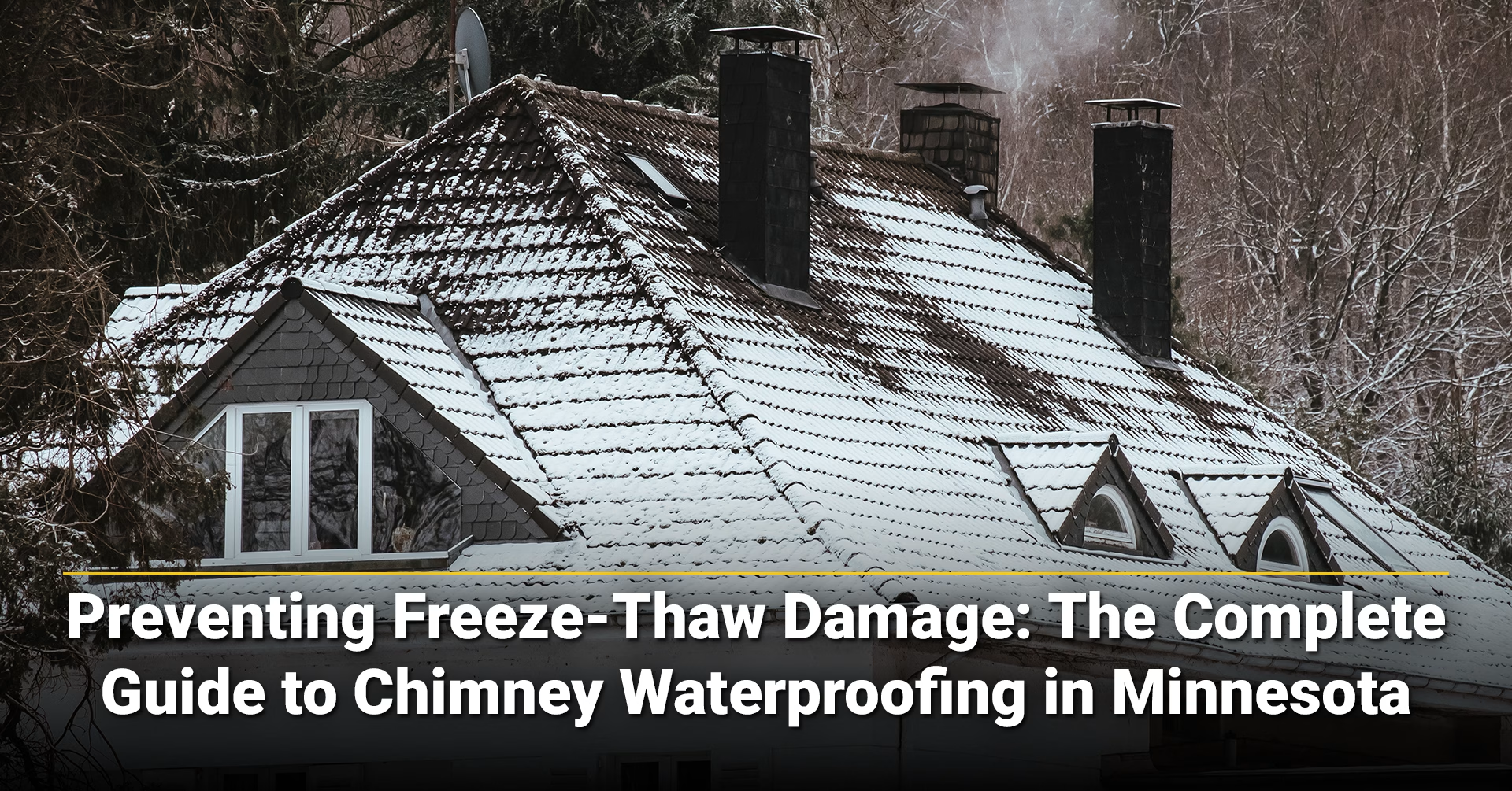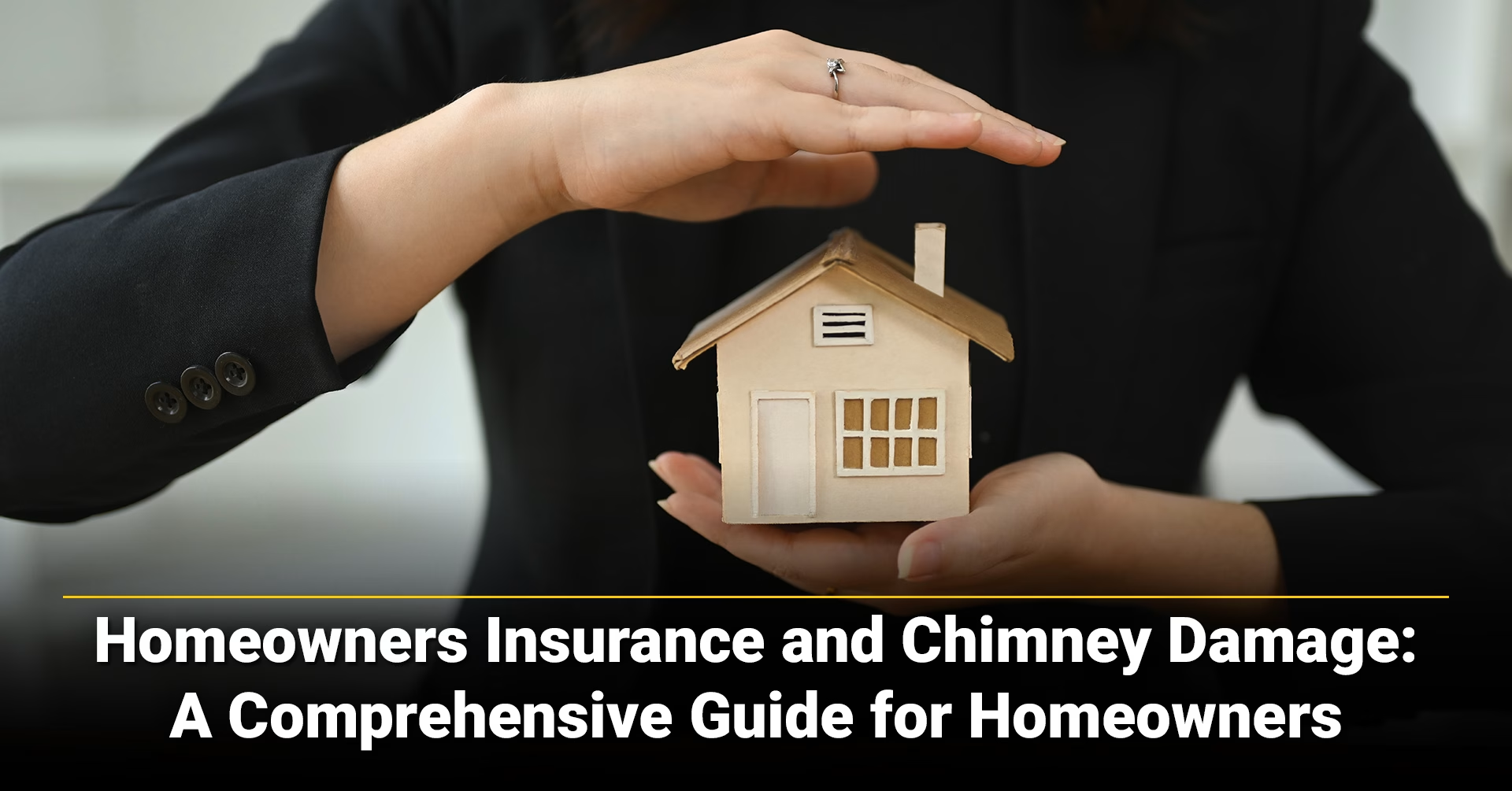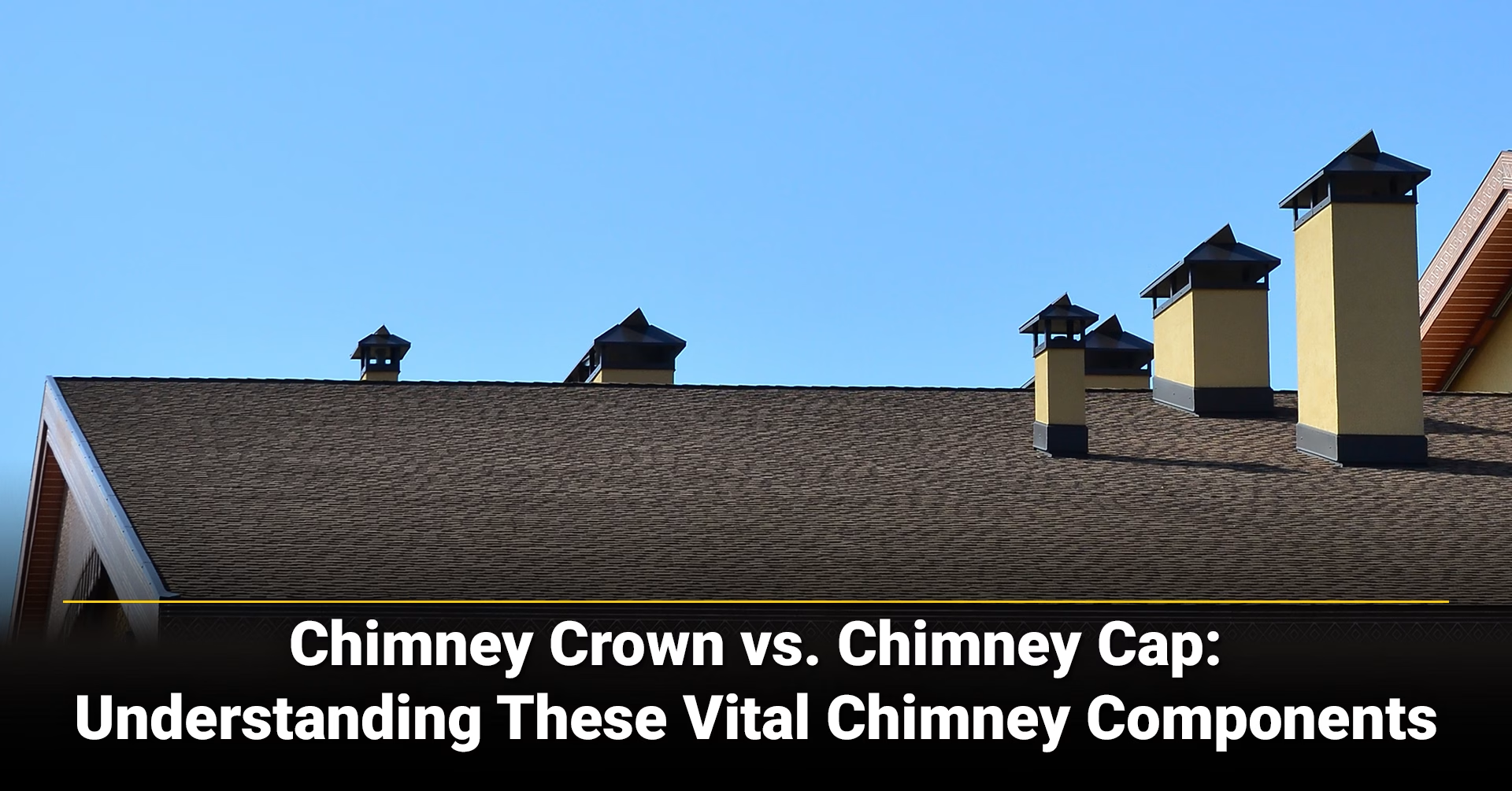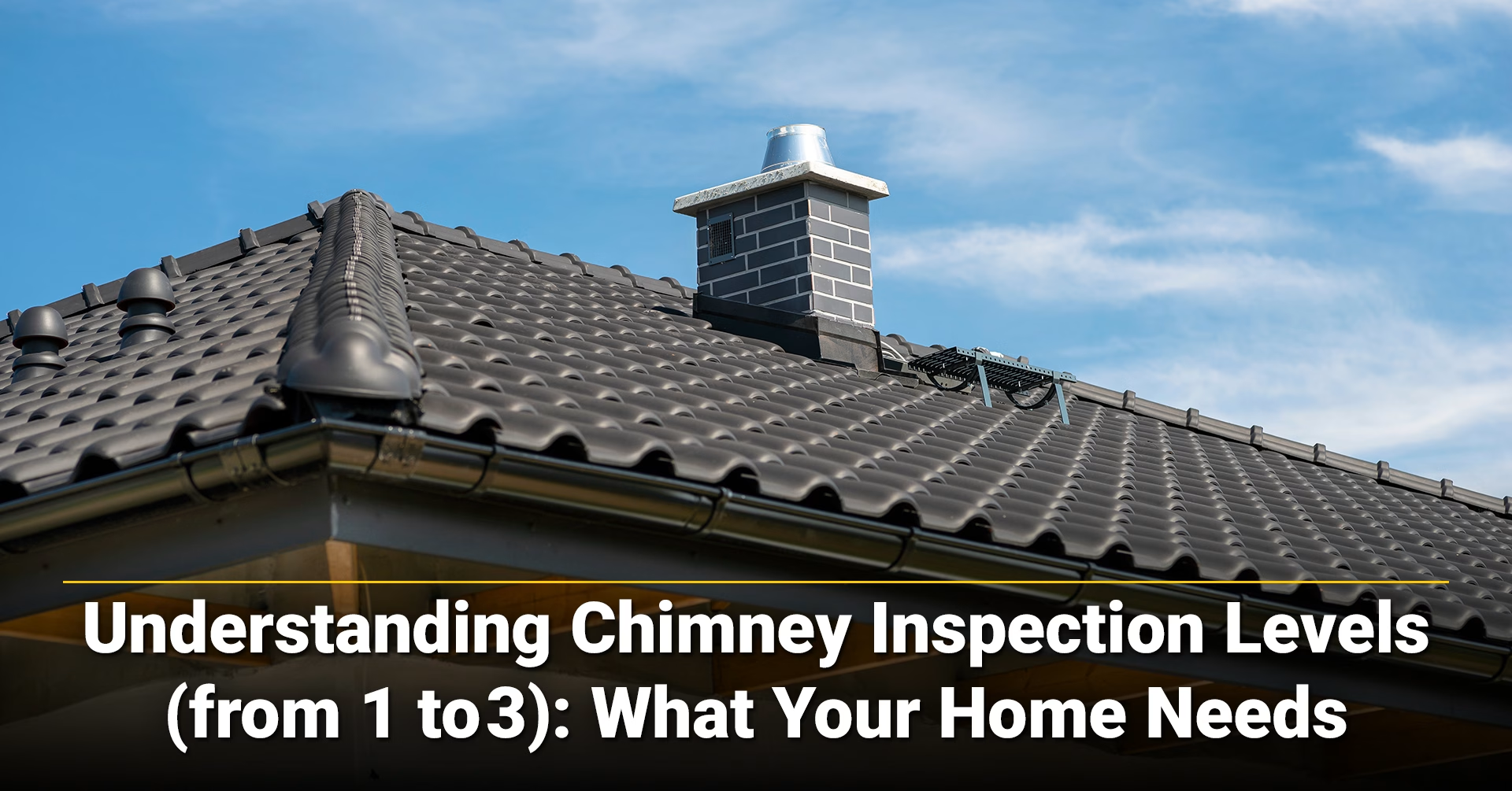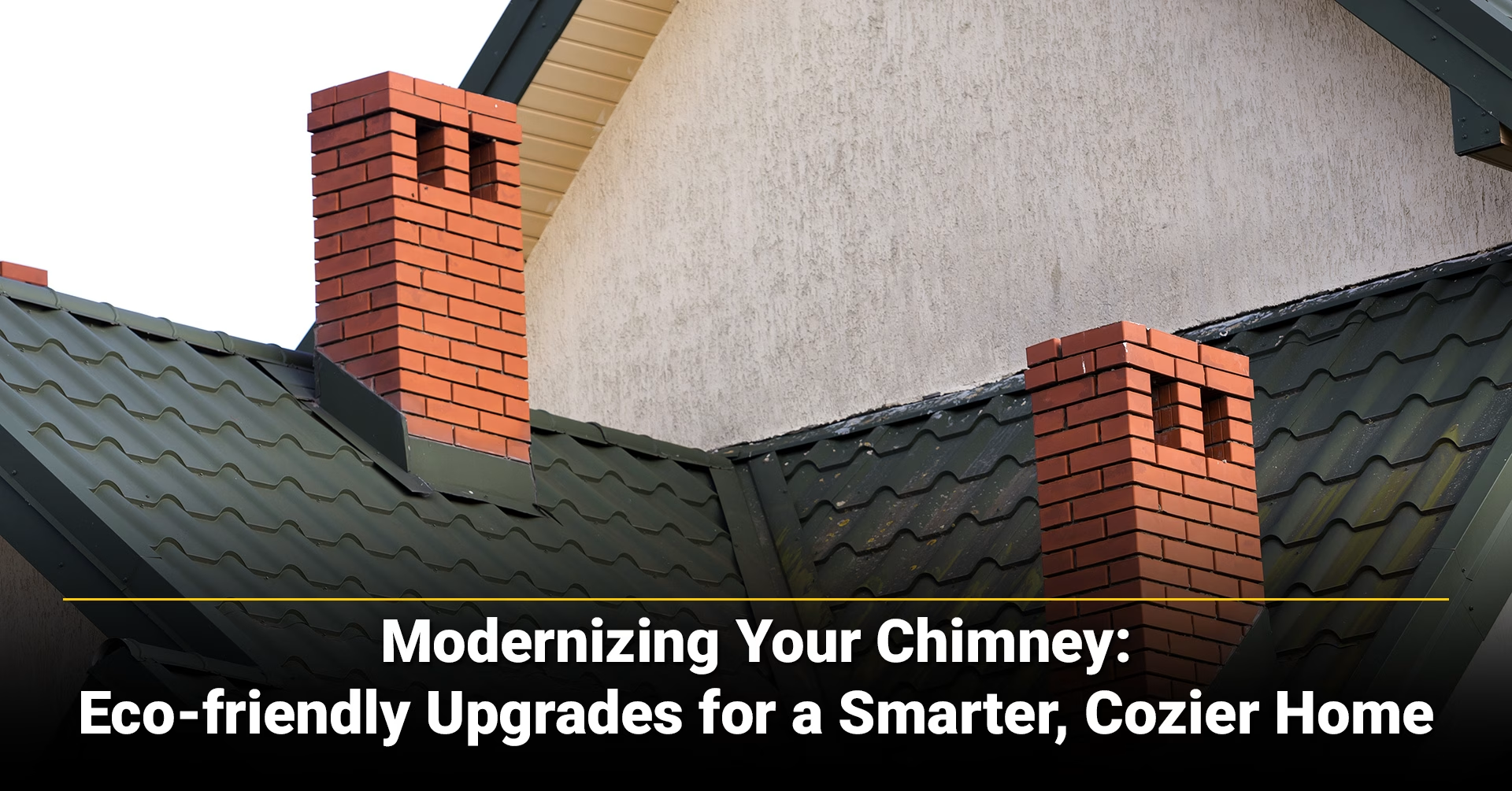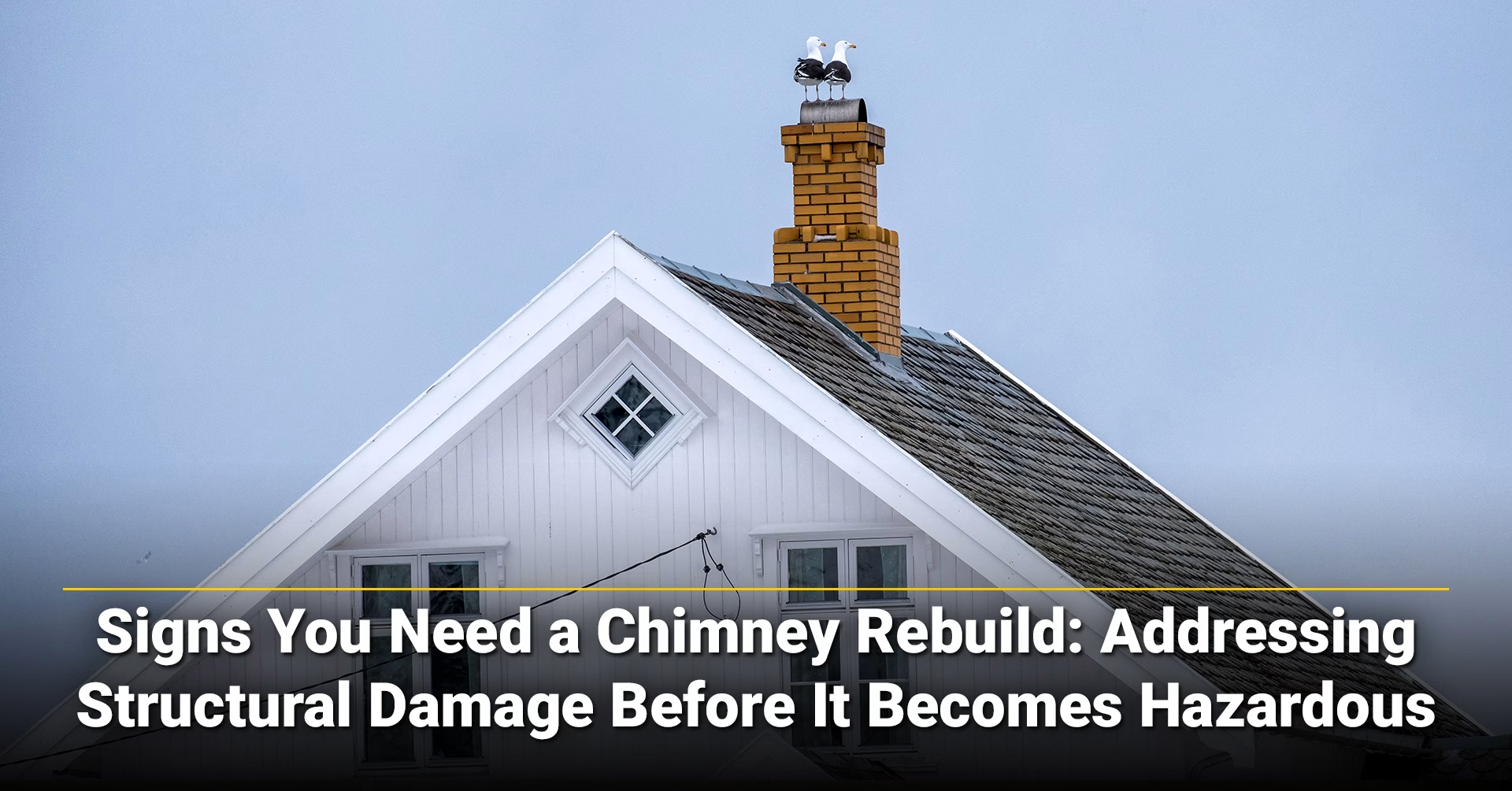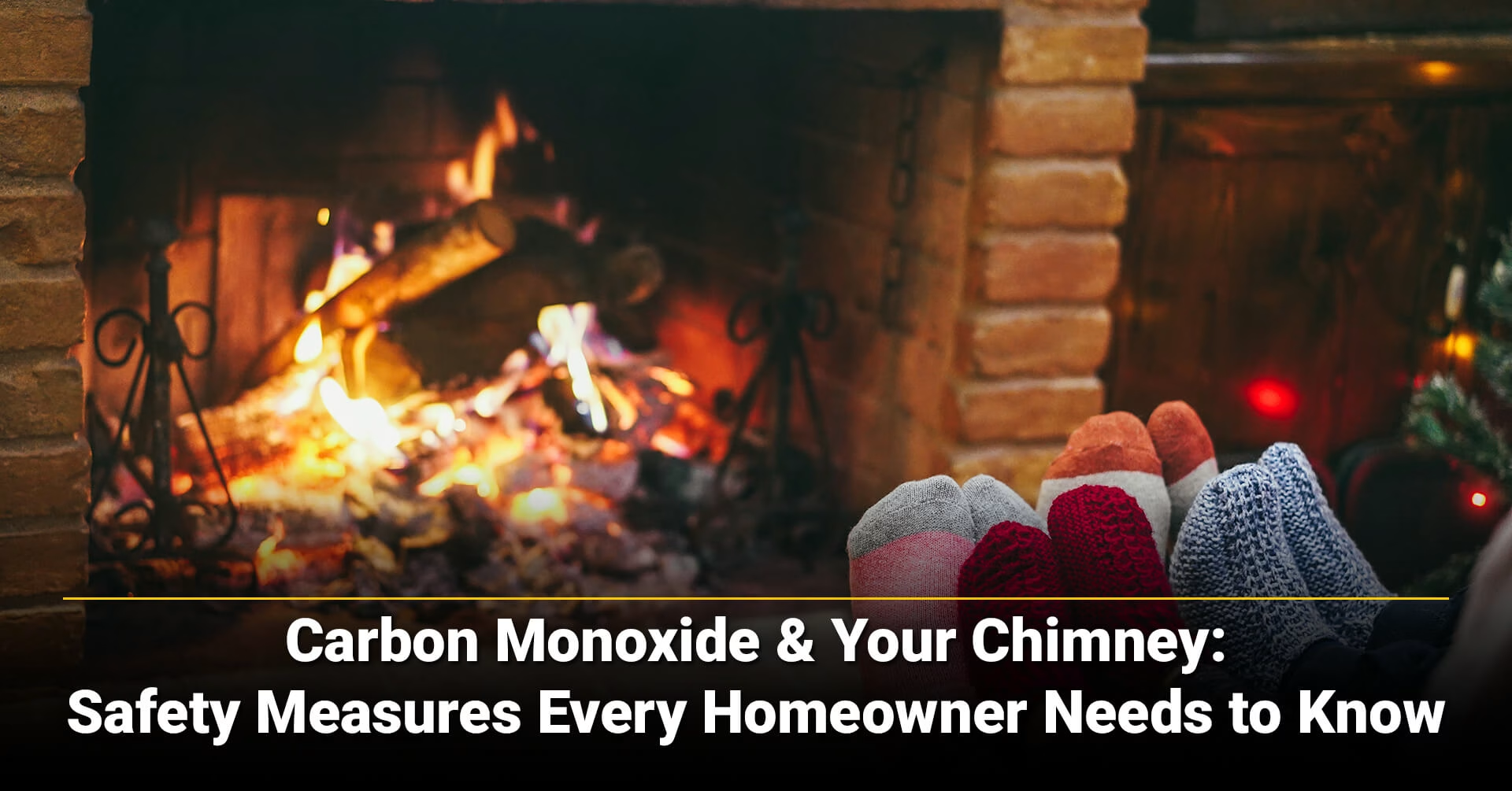Introduction: The Invisible Threat in Your Home
For homeowners, ensuring home safety should always be the number one priority. Carbon monoxide (CO), often called “the silent killer,” is a colorless, odorless, and tasteless gas, making it undetectable without specialized equipment.The danger comes from fuel-burning appliances including fireplaces and chimneys, where malfunction or neglect can turn a source of warmth into a deadly threat. A concrete understanding is crucial for every homeowner.
This article guides homeowners on CO safety concerning their chimney and fuel-burning appliances. It will explain what carbon monoxide is, why it is so dangerous, and how common ways your chimney can create these leaks. As important, it will point out warning signs of CO poisoning and preventative measures to ensure this does not occur. This deep dive into CO safety will provide first and long-time homeowners with the knowledge to protect both their families and most valuable assets.
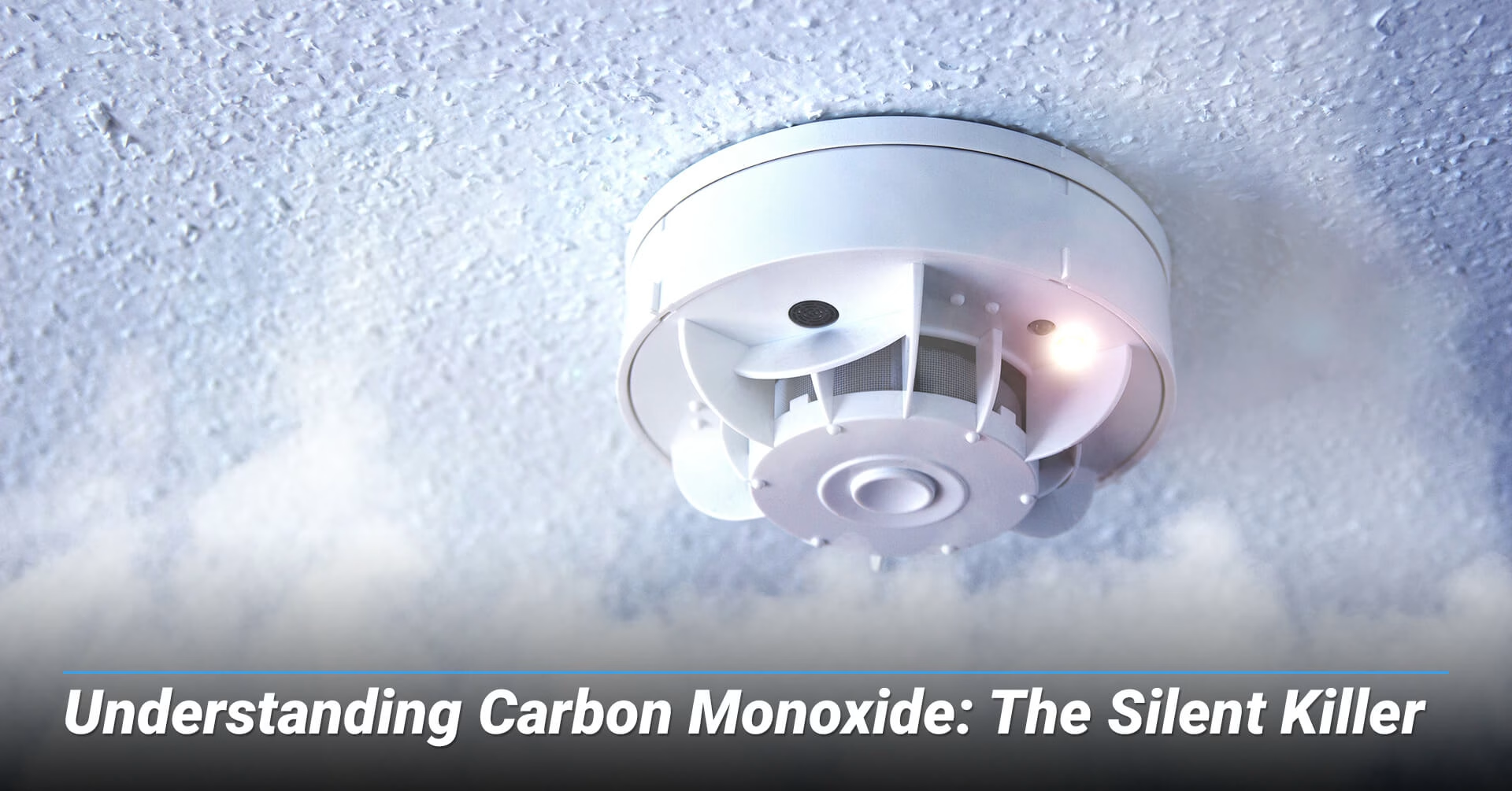
1. Understanding Carbon Monoxide: The Silent Killer
Carbon monoxide (CO) is a highly toxic gas produced by the incomplete combustion of carbon-containing fuels. The reason why it’s so dangerous is due to the following characteristics; invisible, odorless, and tasteless, thus making it undetectable by human senses.
When coming in contact by being inhaled, CO rapidly binds with hemoglobin in the blood, preventing red blood cells from carrying oxygen effectively to vital organs and tissues. The body becomes starved of oxygen, leading to severe medical problems and, in high concentrations, death.
CO can come from a variety of common household items such as furnaces, water heaters, and charcoal grills. Low levels of this are normal, but high levels that come from these appliances not working properly is where issues arise for those living in the home.
A. Carbon Monoxide Poisoning Statistics (U.S. Annual Averages)
The threat of CO poisoning is a significant public health concern, with hundreds of lives affected annually.
| Statistic | Annual Average (U.S.) |
|---|---|
| Deaths from unintentional CO poisoning (non-fire related) | Over 400 |
| Emergency Room Visits | Over 100,000 |
| Hospitalizations | Over 14,000 |
Note: These statistics highlight the widespread impact of CO poisoning, underscoring the importance of preventative measures.
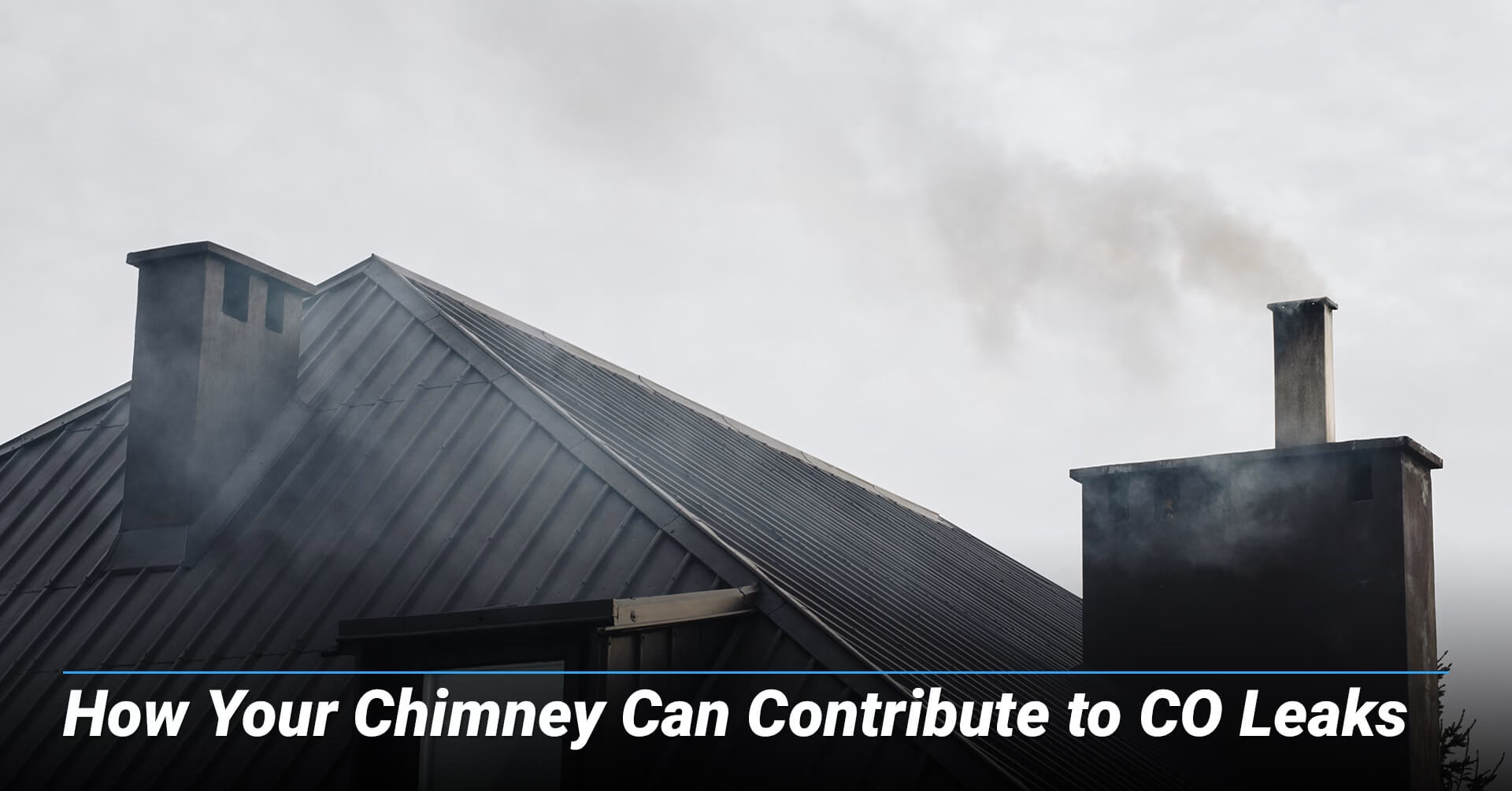
2. How Your Chimney Can Contribute to CO Leaks
Chimneys are the quickest way for Several issues can lead to CO leaks:
A. Damaged Chimney Liners The chimney liner, or flue, is the inner conduit of your chimney system. It has the following uses:
- Contain Combustion Gases: It safely channels smoke, heat, and hazardous gases, including carbon monoxide, out of a home.
- Insulate the Chimney: It protects the chimney’s masonry and nearby combustible materials (ex. wood framing) from extreme heat. This prevents potential house fires.
- Prevent Leaks: It acts as a barrier to prevent CO and other toxic gases from entering living spaces.
As with all houses, chimney liners will naturally deteriorate over time from heat, moisture, and acidic byproducts of combustion. Cracks, gaps, missing sections, or eroded mortar joints are what comes from these. When a liner is cracked or damaged, CO can escape into other parts of the house instead of being expelled outside, creating an unsafe environment.
B. Chimney Blockages A chimney that is blocked or clogged can prevent combustion byproducts from being properly expelled to the outside. Common culprits for blockages include:
- Creosote Buildup: A highly flammable byproduct of burning wood, creosote accumulates in the flue. Significant buildup restricts airflow, forcing gases back into the home.
- Debris and Animal Nests: Leaves, dirt, or nests built by birds and other animals causing blockages lead to poor venting.
- Cracked Masonry: Deteriorated or cracked masonry allows gases to escape.
When the flue is blocked, these harmful gases become trapped and go out the only place they can; your home.
C. Improper Draft The chimney’s draft is its ability to draw smoke and gases upward and out of the home. Damages will negatively affect this ability, leading to CO buildup indoors. An improper draft means that instead of safely exiting, harmful gases flow back into your living space.
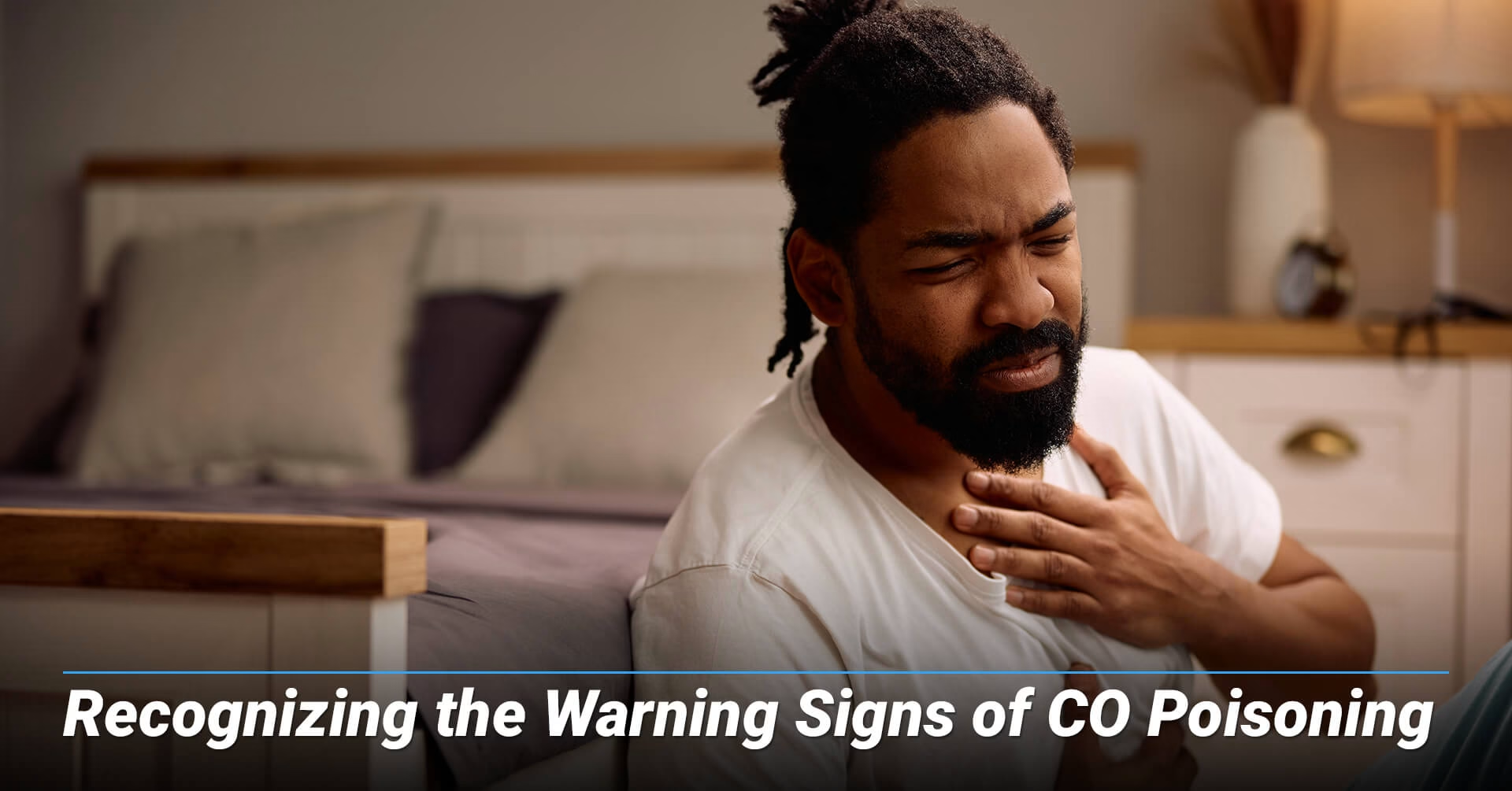
3. Recognizing the Warning Signs of CO Poisoning
Recognizing the symptoms of carbon monoxide poisoning is vital, as early detection can save lives. Symptoms vary depending on the level and duration of exposure.
A. Symptoms of Carbon Monoxide Poisoning
Symptoms can range from mild, flu-like discomfort to severe, life-threatening conditions.
| Exposure Level | Common Symptoms | Notes |
|---|---|---|
| Low-Level Exposure | Headache, Dizziness, Nausea/Vomiting, Tiredness/Confusion, Weakness, Chest/Muscle Pain, Shortness of Breath/Difficulty Breathing | Often mimic flu; CO poisoning does not cause fever; symptoms worsen with prolonged exposure. |
| High-Level Exposure | Impaired Mental State (intoxication), Vertigo, Loss of Coordination (ataxia), Fast Heart Rate, Muscle Spasms (seizures), Loss of Consciousness | Can lead to death within minutes at very high levels. |
| Long-Term Complications | Brain Damage (memory problems, concentration issues, vision/hearing loss), Heart Disease (angina, heart attacks) | Result from prolonged exposure, even at low levels. |
B. Other Clues of a CO Leak
Beyond physical symptoms, be on the lookout for the following signs there might be a leak:
| Clue Type | Specific Indicators |
|---|---|
| Symptom Pattern | Symptoms disappear when you leave the building and return when you come back; symptoms tend to be seasonal (e.g., more headaches in winter). |
| Pet Health | Pets also fall ill or die from an unknown cause. |
| Appliance Appearance | Black, sooty marks on gas fire covers; yellow/brown stains on/around boilers, stoves, or fires. |
| Flame Color | Yellow instead of blue flames from gas appliances (indicating excessive carbon levels). |
| Appliance Behavior | Pilot lights frequently blowing out; unusual drafts surrounding gas-powered appliances. |
| Smoke/Ventilation | Smoke building up in rooms due to a faulty flue. |
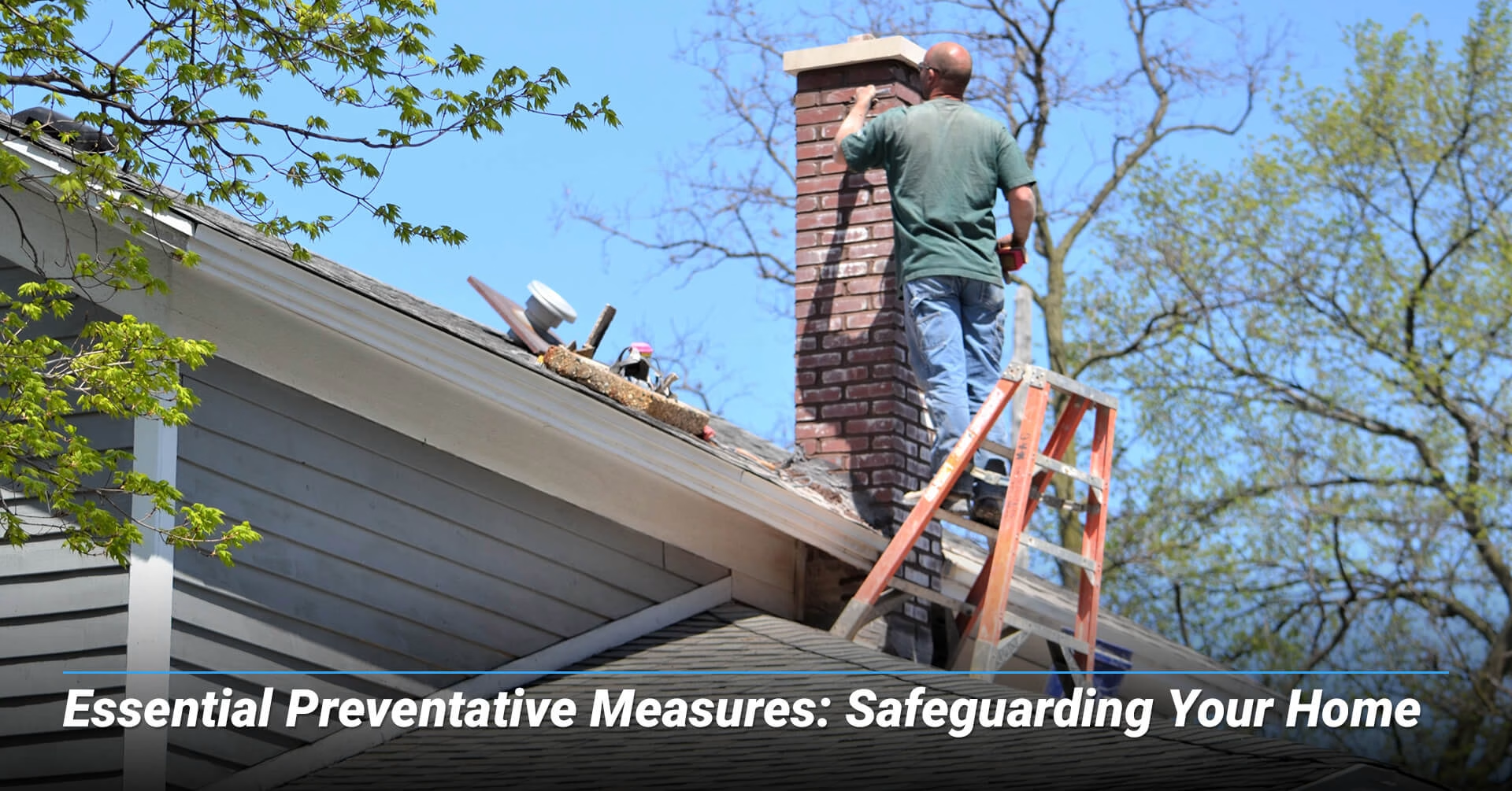
4. Essential Preventative Measures: Safeguarding Your Home
Proactive measures are the best defense for preventing carbon monoxide poisoning from ever occurring while ensuring the safety of your home.
A. Annual Chimney Inspections
Regular professional chimney inspections are non-negotiable for CO safety. The National Fire Protection Association (NFPA) Standard 211 recommends annual inspections for soundness, freedom from deposits, and correct clearances. No matter how many times a chimney is used in a year, frequently, deterioration and damage will likely still naturally occur.
Benefits of annual inspections include:
- Early Detection of Hidden Issues: Professionals use specialized tools, including video cameras, to examine the internal flue system, detecting hidden damage, or improper construction that homeowners are unable to see. This includes insidious dangers like pyrolysis (wood decomposition from heat) that can spontaneously ignite.
- Removal of Hazardous Obstructions: Inspectors can properly and efficiently remove debris, animal nests, or creosote buildup that restrict airflow and cause these gases to escape back up into the home.
- Ensuring Proper Clearances: Professionals are able to verify that the chimney and fireplace have proper clearance from combustible materials, which reduces fire risks.
- Compliance and Longevity: Adherence to NFPA standards keeps the chimney operating safely, reduces risks of fires and CO leaks, and lessens the overall structural damage. Cleanings at least once a year (or more if needed) are a way for you to increase the lifespan of the flue liner.
B. Ensuring Proper Ventilation
Proper ventilation is vital for all fuel-burning appliances to ensure combustion gases are safely vented outside.
- Venting Systems: Common fossil-fuel burning appliances such as gas stoves and water heaters, must vent combustion gases directly to the outside. Ensure vents, chimneys, and exhaust systems are checked regularly for any potential obstructions.
- Adequate Air Supply: Appliances use oxygen from indoor air for combustion. Restricted circulation in enclosed spaces means these dangerous fumes are trapped. Without a place to escape, they raise indoor pollutants to unhealthy levels impacting anyone in the home.
- Avoid Unvented Appliances: Most energy and health experts advise against unvented space heaters or fireplaces. These devices release exhaust fumes directly into the home, which can be detrimental to the home, similar to using a gas range or oven as a space heater.
- Professional Installation: For new venting systems, hiring qualified professionals puts you on the right path as they will be installed correctly thus avoiding any defects that could lead to safety issues.
C. The Crucial Role of Chimney Liners
As highlighted, the chimney liner is the front-line defense for preventing CO leaks. Its strength directly impacts the safe containment and expulsion of combustion gases. Any damage to the liner, whether it be cracks, gaps, or missing sections, creates a direct pathway for this vile invisible villain to enter your home. Therefore, professional inspection and timely repair or replacement of a damaged liner are critical safety measures.
D. Carbon Monoxide Detectors: Your Lifeline
CO detectors are your primary defense against the invisible threat of carbon monoxide.
| Aspect | Recommendation |
|---|---|
| Installation Locations | On each level of the home; outside sleeping areas; inside attached garages; in rooms directly above garages. |
| Placement Distance | Placement Distance At least 15 feet away from gas-burning appliances (fireplaces, stoves) to avoid false alarms. |
| Mounting Height | On a wall about five feet above the floor (eye level) or on the ceiling. |
| Types | Battery-operated or wired; combination smoke/CO alarms available; interconnected alarms recommended. |
| Testing Frequency | Test monthly. |
| Battery Replacement | Replace batteries annually. |
| Unit Replacement | Replace CO detectors every seven years (lifespan). |
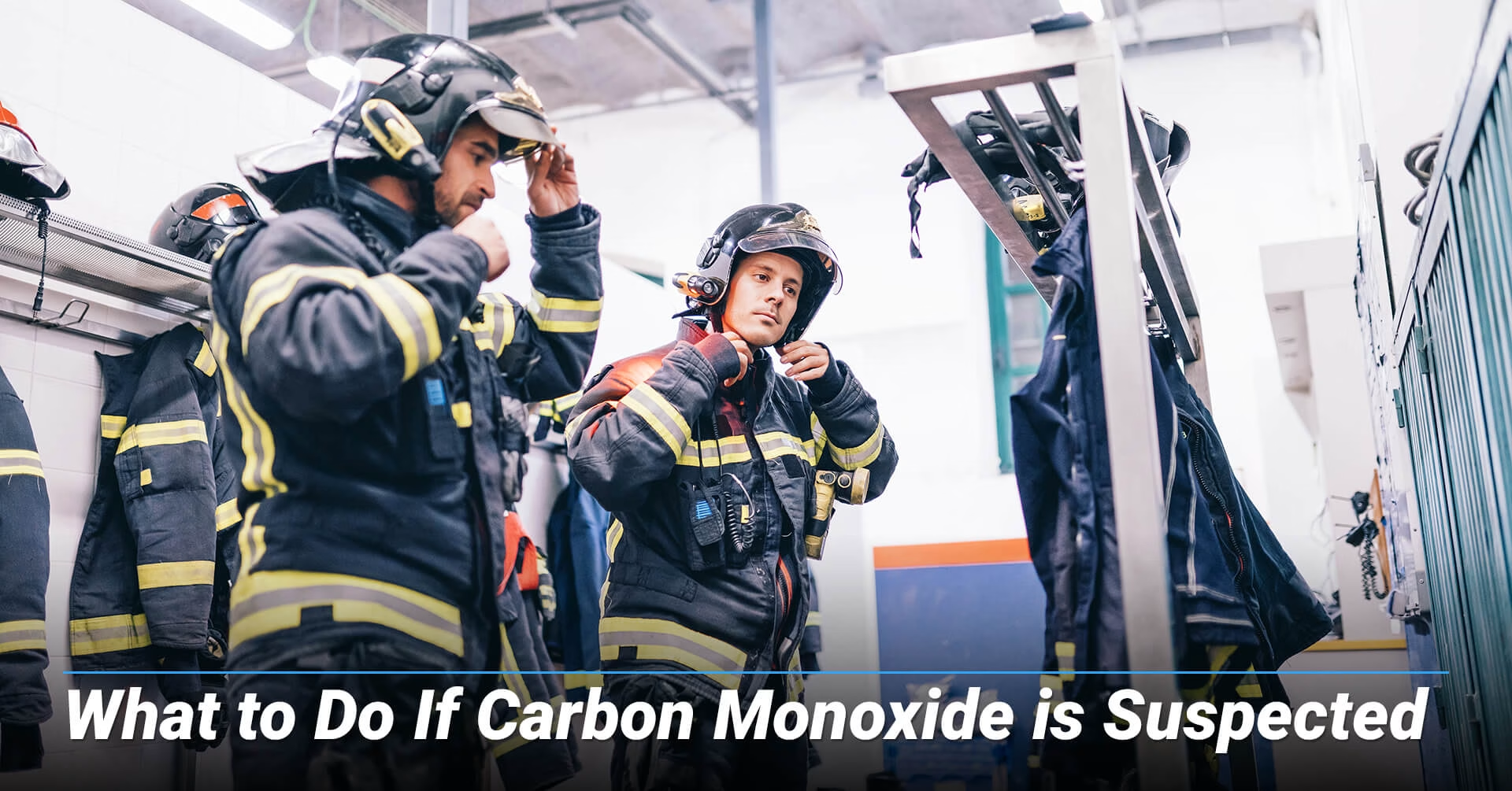
5. What to Do If Carbon Monoxide is Suspected
If a carbon monoxide detector sounds an alarm, or if you suspect poisoning based on symptoms listed above or any other clues, your immediate next steps should resemble the following:
A. Evacuate Immediately: The most important step is to get everyone, including pets, out of the dwelling and into fresh air.
B. Call 911/Fire Department: Once safely outside, call 911 or your local fire department. Notify them if anyone is experiencing flu-like symptoms or others listed above.
C. Do Not Re-enter: Do not re-enter the home until emergency responders have declared it safe. The Fire Department has specialized equipment to detect and measure CO levels and determine the cause. Avoid opening windows and doors before their arrival, as this can make it harder for them to pinpoint the source of the issue.
D. Turn Off Appliances (If Safe): If it is safe to do so, turn off any fuel-burning appliances before evacuating.
Conclusion: Prioritizing CO Safety for Peace of Mind
Carbon monoxide is a silent, deadly threat that every homeowner needs to take seriously. Being invisible makes it difficult to detect at first, so these proactive safety measures are not only advisable, but absolutely essential. Chimneys, while providing warmth and ambiance, can become dangerous conduits for CO if neglected or damaged.
The key to preventing this type of poisoning lies in a multi-faceted approach: ensuring a chimney’s integrity through annual professional inspections, maintaining proper ventilation for all fuel-burning appliances, and installing and regularly testing CO detectors throughout your home. The most important role of a well-maintained chimney liner cannot be overstated in this safety equation.
Prioritizing these safety measures is an investment in the health and well-being of your family along with the longevity of your home. Do not wait for symptoms or an alarm to act. Schedule a professional chimney inspection today, ensure your CO detectors are properly installed and functioning, and commit to regular maintenance and check-ups. This proactive approach provides invaluable peace of mind and safeguards your home from this invisible danger.
Frequently Asked Questions
Here are some frequently asked questions that complement information found in this article:
1. What is carbon monoxide and why is it so dangerous?
Carbon monoxide (CO) is a colorless, odorless, and tasteless gas produced by the incomplete burning of fuels. It’s dangerous because it replaces the oxygen in your blood, starving your heart, brain, and other organs of oxygen, which can lead to severe illness or death.
2. How can my chimney cause carbon monoxide to leak into my home?
Chimneys have the potential to leak if its liner is cracked or damaged, allowing gases to seep through the masonry. Blockages from creosote buildup, debris, or animal nests can also prevent proper venting, forcing it back into your home. An improper draft, where gases don’t rise efficiently, can also lead to an accumulation of this gas.
3. What are the common symptoms of carbon monoxide poisoning?
Symptoms often mimic the flu and early tell-tale signs include headache, dizziness, nausea, vomiting, fatigue, confusion, chest pain, and shortness of breath. Higher exposure can lead to impaired mental state, loss of coordination, seizures, and loss of consciousness. CO poisoning does not cause a fever.
4. Where should I install carbon monoxide detectors in my home?
Install CO detectors on every level of your home and outside each sleeping area. For added safety, place one inside an attached garage and in the room directly above it. Keep them at least 15 feet away from fuel-burning appliances like fireplaces or stoves to prevent false alarms. Test them monthly and replace batteries annually.
5. What should I do if my carbon monoxide detector goes off?
If your CO detector sounds, immediately open windows and doors to ventilate the space, and turn off any fuel-burning appliances if it’s safe to do so. Then, evacuate everyone, including your pets, from the home or place of rest. Once safely outside and away from it, call 911 or your local fire department. Do not re-enter the home until emergency services confirm it is safe.

